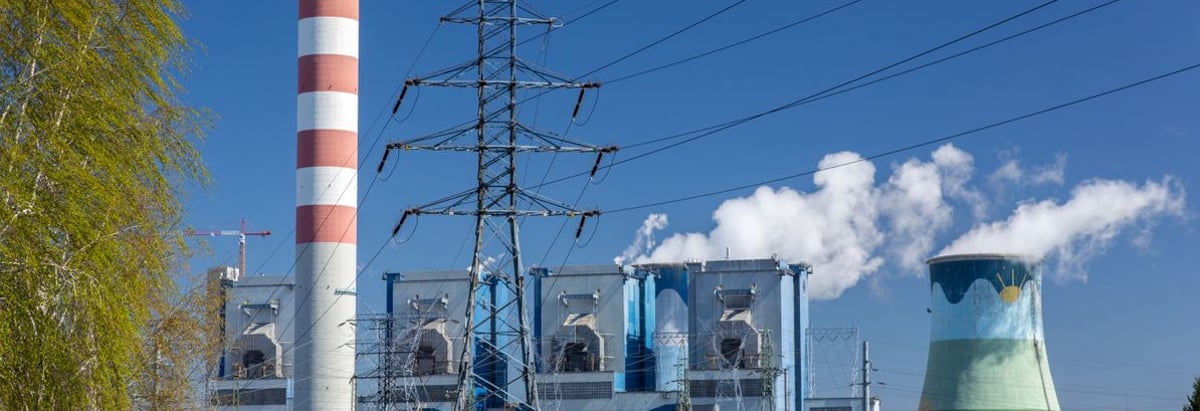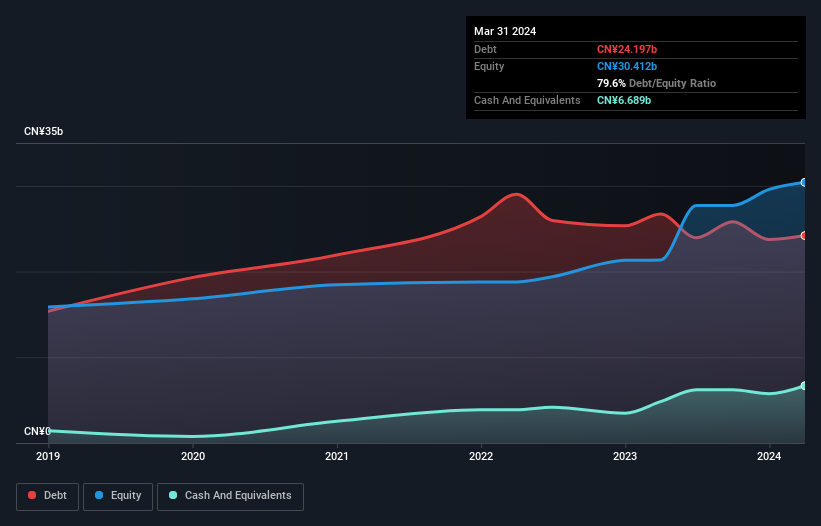- China
- /
- Renewable Energy
- /
- SZSE:001286
These 4 Measures Indicate That Shaanxi Energy Investment (SZSE:001286) Is Using Debt Extensively

Some say volatility, rather than debt, is the best way to think about risk as an investor, but Warren Buffett famously said that 'Volatility is far from synonymous with risk.' So it seems the smart money knows that debt - which is usually involved in bankruptcies - is a very important factor, when you assess how risky a company is. We can see that Shaanxi Energy Investment Co., Ltd. (SZSE:001286) does use debt in its business. But the more important question is: how much risk is that debt creating?
Why Does Debt Bring Risk?
Generally speaking, debt only becomes a real problem when a company can't easily pay it off, either by raising capital or with its own cash flow. Part and parcel of capitalism is the process of 'creative destruction' where failed businesses are mercilessly liquidated by their bankers. However, a more common (but still painful) scenario is that it has to raise new equity capital at a low price, thus permanently diluting shareholders. Of course, the upside of debt is that it often represents cheap capital, especially when it replaces dilution in a company with the ability to reinvest at high rates of return. When we examine debt levels, we first consider both cash and debt levels, together.
View our latest analysis for Shaanxi Energy Investment
How Much Debt Does Shaanxi Energy Investment Carry?
As you can see below, Shaanxi Energy Investment had CN¥24.2b of debt at March 2024, down from CN¥26.7b a year prior. However, it does have CN¥6.69b in cash offsetting this, leading to net debt of about CN¥17.5b.

How Healthy Is Shaanxi Energy Investment's Balance Sheet?
We can see from the most recent balance sheet that Shaanxi Energy Investment had liabilities of CN¥13.3b falling due within a year, and liabilities of CN¥21.3b due beyond that. Offsetting these obligations, it had cash of CN¥6.69b as well as receivables valued at CN¥1.91b due within 12 months. So its liabilities total CN¥25.9b more than the combination of its cash and short-term receivables.
While this might seem like a lot, it is not so bad since Shaanxi Energy Investment has a market capitalization of CN¥43.6b, and so it could probably strengthen its balance sheet by raising capital if it needed to. But we definitely want to keep our eyes open to indications that its debt is bringing too much risk.
We measure a company's debt load relative to its earnings power by looking at its net debt divided by its earnings before interest, tax, depreciation, and amortization (EBITDA) and by calculating how easily its earnings before interest and tax (EBIT) cover its interest expense (interest cover). This way, we consider both the absolute quantum of the debt, as well as the interest rates paid on it.
With a debt to EBITDA ratio of 2.2, Shaanxi Energy Investment uses debt artfully but responsibly. And the fact that its trailing twelve months of EBIT was 7.9 times its interest expenses harmonizes with that theme. Sadly, Shaanxi Energy Investment's EBIT actually dropped 8.3% in the last year. If that earnings trend continues then its debt load will grow heavy like the heart of a polar bear watching its sole cub. There's no doubt that we learn most about debt from the balance sheet. But it is future earnings, more than anything, that will determine Shaanxi Energy Investment's ability to maintain a healthy balance sheet going forward. So if you want to see what the professionals think, you might find this free report on analyst profit forecasts to be interesting.
Finally, a company can only pay off debt with cold hard cash, not accounting profits. So we clearly need to look at whether that EBIT is leading to corresponding free cash flow. Over the most recent three years, Shaanxi Energy Investment recorded free cash flow worth 56% of its EBIT, which is around normal, given free cash flow excludes interest and tax. This free cash flow puts the company in a good position to pay down debt, when appropriate.
Our View
Even if we have reservations about how easily Shaanxi Energy Investment is capable of (not) growing its EBIT, its interest cover and conversion of EBIT to free cash flow make us think feel relatively unconcerned. We think that Shaanxi Energy Investment's debt does make it a bit risky, after considering the aforementioned data points together. Not all risk is bad, as it can boost share price returns if it pays off, but this debt risk is worth keeping in mind. The balance sheet is clearly the area to focus on when you are analysing debt. However, not all investment risk resides within the balance sheet - far from it. For example - Shaanxi Energy Investment has 2 warning signs we think you should be aware of.
Of course, if you're the type of investor who prefers buying stocks without the burden of debt, then don't hesitate to discover our exclusive list of net cash growth stocks, today.
New: Manage All Your Stock Portfolios in One Place
We've created the ultimate portfolio companion for stock investors, and it's free.
• Connect an unlimited number of Portfolios and see your total in one currency
• Be alerted to new Warning Signs or Risks via email or mobile
• Track the Fair Value of your stocks
Have feedback on this article? Concerned about the content? Get in touch with us directly. Alternatively, email editorial-team (at) simplywallst.com.
This article by Simply Wall St is general in nature. We provide commentary based on historical data and analyst forecasts only using an unbiased methodology and our articles are not intended to be financial advice. It does not constitute a recommendation to buy or sell any stock, and does not take account of your objectives, or your financial situation. We aim to bring you long-term focused analysis driven by fundamental data. Note that our analysis may not factor in the latest price-sensitive company announcements or qualitative material. Simply Wall St has no position in any stocks mentioned.
Have feedback on this article? Concerned about the content? Get in touch with us directly. Alternatively, email editorial-team@simplywallst.com
About SZSE:001286
Shaanxi Energy Investment
Engages in the thermal electricity and coal production business in China.
Fair value with acceptable track record.
Market Insights
Community Narratives



